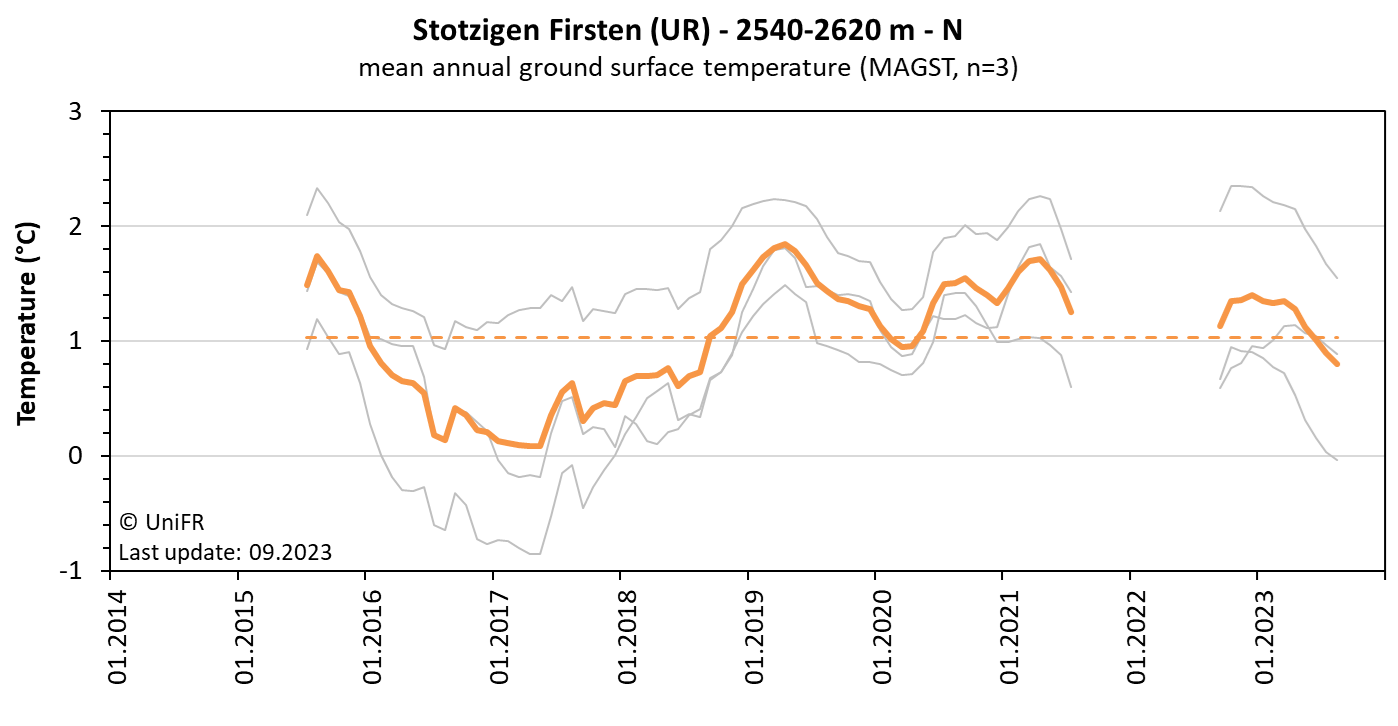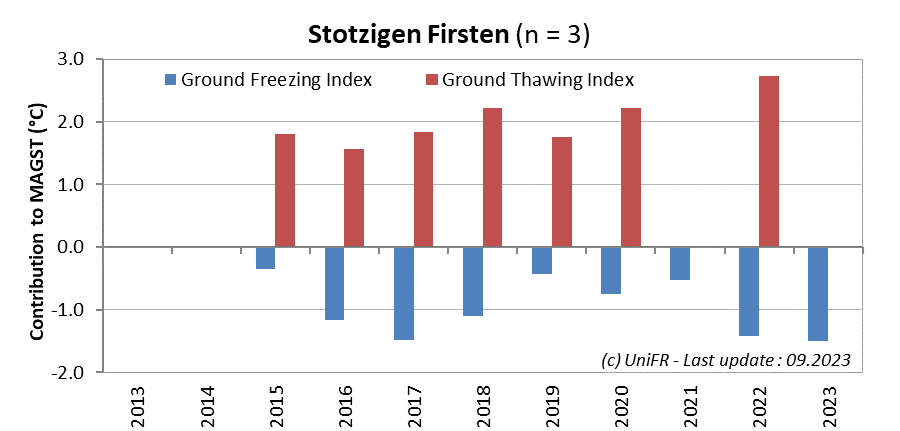STOTZIGEN FIRSTEN (UR)
Rock glacier
Elevation: 1250-2630m - Massif: Uri Alps (Furka) - Commune: Realp (UR)
The rock glacier as part of the historical proglacial margin of a local glacieret (snowfield) is located northwest of the Stotzigen Firsten crest. During the Little Ice Age, the rock glacier was partly overrun by the glacieret, which brought on its back a push moraine into being, i.e. a large mass of frozen sediments, which was pushed, dragged and deformed by the progression of a glacier. Today the glacier has disappeared. Whereas the rock glacier tongues moves slowly downslope, the push moraine, whose substratum is still frozen, sags (up to 10 cm subsidence per year caused by ice melt) and creeps back towards the depression left by the former glacier at a rate of up to about five centimeters per year.
-
Measurements and observations
Geodetic (GNSS)
Thermal (ground surface temperature : GST) -
Figures

Measured horizontal flow field (mean annual velocity).

Annual horizontal surface velocity in several sections of the rock glacier. Mean of selected sets of points.

Mean annual ground surface temperature. The orange curve represents the mean temperature of the n sensors installed on the site (grey curves). The orange dotted line is the mean temperature observed since the beginning of the time series.

Contribution of the annual Ground Freezing (sum of all daily mean values < 0°C) and Ground Thawing (>0°C) Indexes to the mean annual ground surface temperature (MAGST) on a set of selected locations (n) on the rock glacier. Or : how cold was the winter and how warm was the summer at the surface of the rock glacier ?

Annual dates of the start and end of the snowmelt period (zero curtain phase). Mean of n sensors placed on permafrost terrain. The dotted lines show the mean dates since the beginning of the time series.
-
Collaboration
-
Publications
